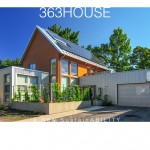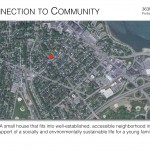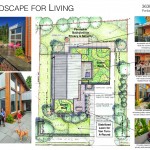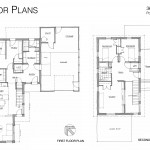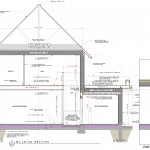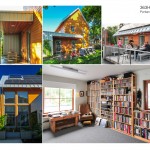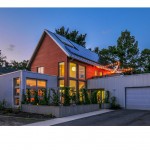363HOUSE
Project Name
Client. A young family – Jessica, Todd and son Louie.
Two primary design mandates:
- Provide a supportive, accessible living environment for Jessica – a C6/C7 quadriplegic, paralyzed from mid-chest down with limited use of arms and hands.
- Provide an energy-efficient, sustainable living environment for a young family.
Most “green” homes are built in the suburbs, or beyond, resulting in unsustainable development patterns. This house provides an alternative – a small, high-performance house in an established neighborhood.
A small house (2,045 s.f.) was key, for environmental and fiscal reasons. A rigorous and thoughtful building program provides the essentials – three small bedrooms plus two studios (the residents work from home). The building is a combination of three simple rectilinear volumes with three outdoor “rooms” – an entry court, rear patio, and roof-top terrace.
Abundant natural light makes for a pleasant indoor space year-round, an important consideration especially in the winter when getting out and around in a wheelchair can be a significant challenge!
363HOUSE provides a comfortable, nurturing environment for Jessica and her young family. Something that the architect (Jessica’s father) finds immensely gratifying!
Architecture or A/E Firm Name
Architect
Team
Consultants
Location
Client
General Contractor
MEASURE 1: DESIGN & INNOVATION
- Basic building design and massing were developed and fine-tuned in response to detailed solar studies. Building envelope was carefully considered to optimize performance, constructability and low-maintenance.
- Accessibility goals support Jessica’s abilities and minimize barriers to an accessible life. Doing so required a skillful blend of universal design and accessibility principles.
- Overall, the result is “A New SustainABILITY” that promotes a healthy environment and supports the residents’ health and wellbeing.
MEASURE 2: REGIONAL COMMUNITY DESIGN
- The owner’s decision to build a home within the city of Portland was based on the belief that building in the city has a lasting impact on the local economy, strengthens the neighborhood’s social fabric, and is economically and environmentally desirable because it taps into existing infrastructure and resources – a sustainable alternative to the resource-intensive greenfield developments.
- The site allows for easy access to the heart of the city. Restaurants, local shops, public parks, and the University are all within walking distance.
- Established, mostly accessible neighborhood supports a socially and environmentally sustainable life for a young family.
MEASURE 3: LAND USE & SITE ECOLOGY
- Situated on a formerly vacant urban parcel, the project repairs the street edge and adds immediate density to a well established neighborhood, thus avoiding the environmental impact of developing suburban greenfields or productive farmlands.
- The site, a flat lot is bounded by houses on either side and synagogue pre-school in the back. Minimal building footprint maximizes use of a small lot and provides multiple opportunities for use and enjoyment of the site.
- Land use restrictions could have accommodated a one-story building, but would have resulted in very little useable exterior area, an important program requirement for Jessica and her family. As a result, a two-story scheme was developed. Second floor access is provided via a wheelchair lift.
MEASURE 4: BIOCLIMATIC DESIGN
- Portland’s very cold winters and sometimes hot summers, requires a careful mix of active and passive design strategies to ensure proper interior conditioning.
- A centrally located staircase functions as a thermal chimney, allowing warmer air on the main level to escape through operable windows and door at the upper floor.
- Fewer, smaller windows on the northeast and northwest walls minimize heat loss in the winter and unwanted solar gain in the summer months.
MEASURE 5: LIGHT & AIR
- The kitchen/dining/living area, where the majority of common activities take place, is generously glazed to enhance the visual connectivity between inside and outside.
- The house is mechanically ventilated utilizing a dedicated outdoor air supply system via a heat recovery system to provide fresh air to occupants.
- Only low-VOC and VOC-free paints and cabinetry were used, minimizing off-gassing and toxic air pollutants inside the house.
MEASURE 6: WATER CYCLE
- All landscaping, selected and placed strategically to act as permanent erosion control, is native and drought tolerant, requiring essentially no irrigation after taking root.
- Low-flow toilets, showers, faucets.
MEASURE 7: ENERGY FLOWS & ENERGY FUTURE
- Building envelope walls are 12” SIPs (Structural Insulated Panels) – R49. Roof insulation is a hybrid system of 12” SIPs and cellulose – R98. Subslab and slab perimeter insulation – R30.
- Air-to-water heat pump with radiant slab at first floor and radiant ceilings at second floor. As a quadriplegic, Jessica has extreme difficulty in regulating her body temperature. The steady, draft-free warmth of radiant heat is crucial to her comfort and well-being.
- On-site renewable energy: 7.2 kw, grid-tied solar PV system for electricity. Solar thermal panels for domestic hot water.
- Tight envelope: 1.0 ACH50. HERS Index=8. Meets the Architecture 2030 Challenge goal of 70% carbon reduction by 2015. LEED Platinum targeted (final certification in-process). Near net-zero energy (modeled TOTAL annual energy cost < $1,000 per year).
MEASURE 8: MATERIALS & CONSTRUCTION
- Materials selected based on durability and low maintenance, toxicity, and environmental characteristics (sustainable, recycled, rapidly renewable) with preference given to materials that are locally or regionally sourced and manufactured.
- Building envelope is clad in materials resistant to rot and decay. Siding is cement fiber clapboards and galvalume metal siding with a drainage plane (rainscreen) designed to continuously ventilate the façade. The metal roof is standing seam galvalume.
- The ground and polished concrete slab (first floor) and hardwood floor (second floor) were selected for their hardness which provides a responsive surface for a wheelchair – a significant consideration for a quadriplegic in a manual wheelchair.
MEASURE 9: LONG TERM FLEXIBILITY AND ADAPTABILITY
- New SustainABILITY supports adaptability of the built environment. Jessica is comforted in knowing that this house can readily adapt as her limited physical abilities further diminish with age.
MEASURE 10: COLLECTIVE WISDOM & FEEDBACK LOOPS
- Predesign. Early involvement of all team members (owner, architect, landscape architect, LEED consultant and renewable energy consultant) provided for a clear understanding of the project and identification of each member’s respective responsibilities.
- Lifestyle. As a quadriplegic, Jessica requires higher energy usage when compared to a typical occupant.
- This house is occupied nearly 24/7 as Jessica and Todd both work from home.
- Her daily, morning showers can last 30 minutes, significantly increasing hot water consumption.
- As mentioned above, Jessica has difficulty controlling her body temperature (she tends to “run cold”). Typical wintertime thermostat setting is 72°F, sometimes higher.
- A home automation system controls window shades, security system, music and some lighting throughout the house. This provides valuable independence for Jessica. However, the system’s electronics are energy intensive.

